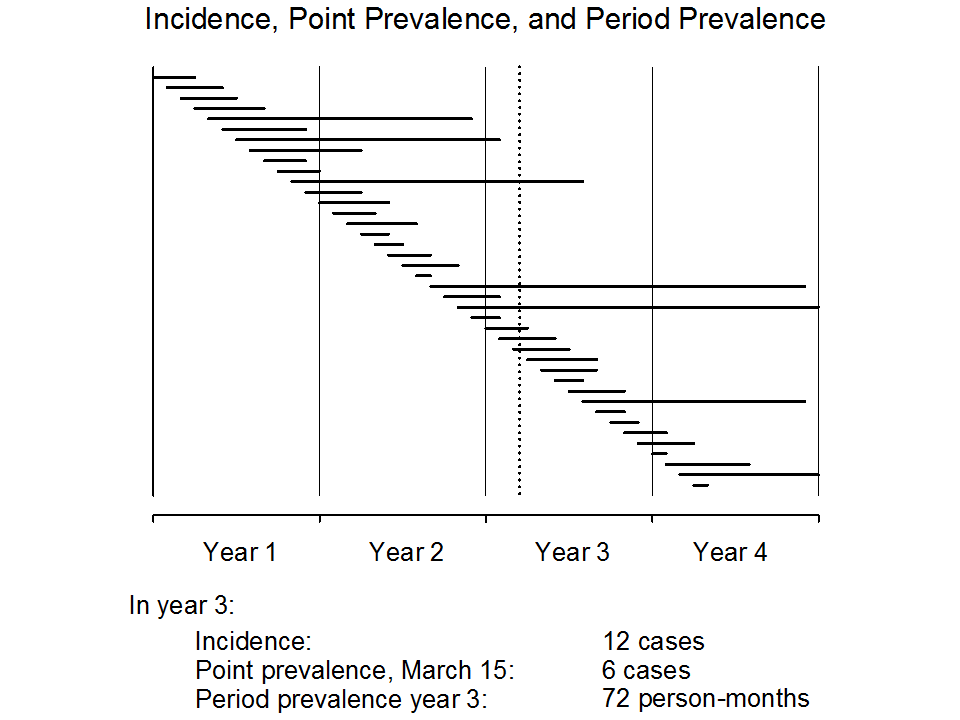 |
|
| |
|
|
| Slide |
065 |
Epidemiologic Basis of Tuberculosis Control |
 |
Next |
 |
 |
Previous |
 |
First |
 |
Last |
This is obviously an entirely different situation. However, it has in common with the previous one that the incidence in year 3 is the same, 12 cases. The prevalence is only six cases, and person-time of infectiousness has been reduced to 72 person-months.
This might be a situation with a good tuberculosis control program, where the majority of cases is detected within 3 to 5 months and rendered non-infectious with adequate chemotherapy.
It seems obvious that the risk of exposure, and thus as a consequence the risk of infection in this community has been drastically reduced by cutting the duration of infectiousness. Thus, in the first example, the same incidence of infectious cases is associated with a much higher risk of infection than in this second example.
These examples demonstrate that information about the risk of infection does not allow an estimation of the burden of disease.
The risk of infection is the most informative indicator of the epidemiologic situation and its trend in a community, but it should not be abused to offer information that it cannot possibly provide. |
| |
|
Go to top
Last update:
September 10, 2010